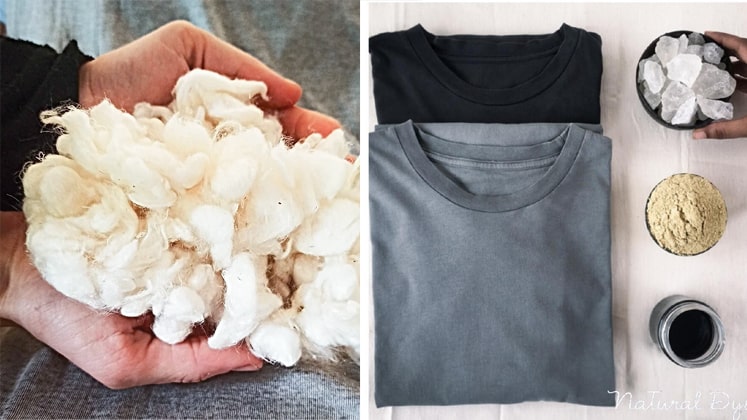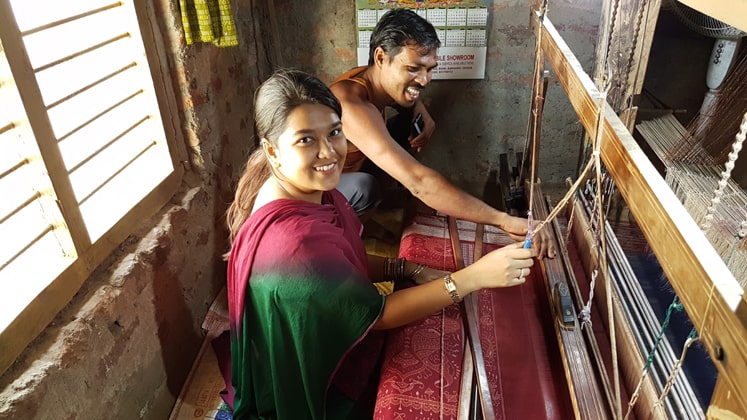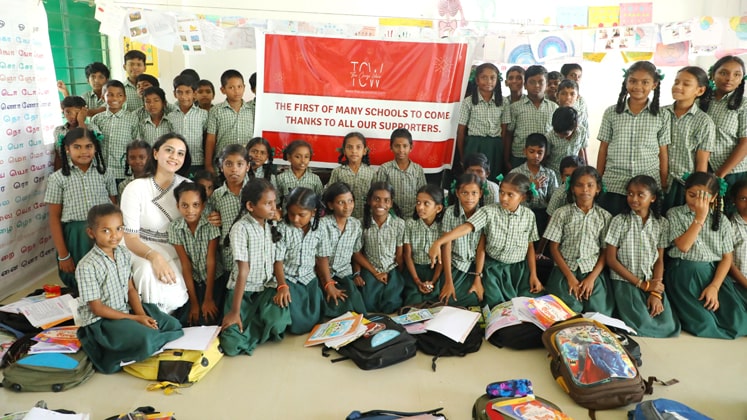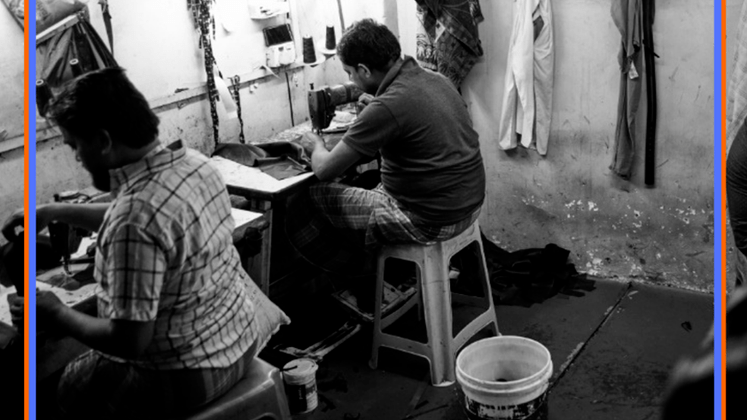When one thinks of the fashion industry, two very opposing perspectives usually come to mind. The first perspective is that of the billion-dollar fast fashion companies that use technology to produce thousands of designs every day, while the second perspective is that of slow-moving start-ups whose only goal is to work for those who have worked for them, be it the environment, farmers, artisans or any segment of the underprivileged society.
In addition to supporting artisans, social fashion start-ups also address health and environmental issues. By providing access to clean water and sanitation, they improve the quality of life for communities around the country. Also, by working with farmers to implement sustainable agricultural practices, they help conserve natural resources and ensure a sustainable future.
In recent years, India has seen a rise in the number of promising social fashion start-ups with a long-term goal of creating a balance between economic growth and social well-being. These start-ups are committed to the welfare of the society and are motivated by a cause rather than money.
Social entrepreneurship, once a niche area, is spreading its wings
When people first started talking about social entrepreneurship, it was a niche business. But today, more and more entrepreneurs are choosing to focus their efforts on social prosperity. According to the Global Entrepreneurship Monitor (GEM), a multi-country study, almost half as many people are creating ventures with primarily social or environmental causes as those with a solely commercial aim.
CSR has typically been viewed by companies as a cost or a compliance burden. Entrepreneurs who care about sustainability are rewriting this view and proving that CSR can contribute to business success and value creation. These entrepreneurs are driving innovation and progress while benefiting the society by incorporating sustainability into their business models.
“There should be a better understanding of why it is important to champion a cause. At MAATI, we are committed to a sustainable manufacturing process because we want to lead by example so that products can be made without harming the environment. We also make sure that our artisans are well taken care of. We never displace our artisans for work,” stated Neha Kabra, Owner of MAATI, an ethical fashion label that prides itself on sustainability and ethically sourced handwoven Indian textiles.
The movement is primarily driven by young entrepreneurs
Peter Drobac, Director of the Skoll Centre for Social Entrepreneurship, stated that, “Younger generations are more deeply connected to societal issues and want careers that will allow them to create positive change.”
The emerging number of social fashion start-ups are now shifting toward a deeper understanding of the 3Ps for the Triple Bottom Line (PEOPLE and PLANET along with PROFIT). These start-ups are not only changing the way we consume but also the way we live. From working religiously for the environment to providing vocational training to artisans, some start-ups have become the apple of the eye.
FABORG: ambitious plans to combat desertification and reverse land degradation
The fashion industry damages the environment in a number of ways. Cotton uses a great deal of water and pesticides to grow and once cotton is harvested, it takes a significant amount of energy and chemicals to turn it into fabric. Gowri Shankar has been in the business of weaving and textile creation for 15 years. With a mission to create an enterprise that is 100 per cent sustainable, while empowering the farmers and taking care of afforestation, he founded Faborg in 2015 in the state of Tamil Nadu – a company that creates sustainable, natural fabrics and products.
One of the company’s goals is to help combat desertification by halting and reversing land degradation. To do this, it practises multi-crop cultivation which can restore degraded forest land. Additionally, the company is empowering dryland and farming communities by providing all-year-round income in the most vulnerable areas of the country, where livelihood is unsecured.
“I have 15 goals which are streamlined when it comes to Faborg and its vision, apart from developing Weganool, a 100 per cent plant-based and chemical-free fabric made of Calotropis fibres blended with regenerative organic cotton, and developing Arka, a naturally occurring chemical compound that repels the insects. However, the most important goal is to combat desertification, halt and reverse land degradation and halt biodiversity loss”, stated Shankar.
Rustic Hue: focus on craft revival and working with the local weaver community
Indian craft serves as an integral part of the culture and customs of rural and tribal communities and a few visionary start-ups are reviving its past for a better future. One such start-up is a research-based conscious label Rustic Hue that focuses on product development through design-by-design interventions in craft clusters by collaborating with local weavers’ communities like Meher Bhulia and Kosta.
“We identified the weavers’ communities who once used to work on a craft and eventually stopped producing as they couldn’t tap the right market or connect to the consumers for that craft because of which they diversified to practice other weavings, leaving behind the existing one and it took us almost nine months to persuade them to restart working. Our ‘Bapta Revival Project’ is an outcome of our effort that brought the weaver’s communities back to practising it,” said Founder and Creative Head, Swikruti Pradhan.
The Bapta revival project also won India’s Best Design Award 2022 in Textile Design Category which was organised by Indi Design.
The brand works on a knowledge-sharing basis, where it brings inputs in terms of market segmentation, product diversification, technical advancement, craft revival, etc., while providing weavers the scope to upskill themselves and the exposure they were never introduced to. Additionally, it helps them be aware of the Government schemes, opportunities, financial loans to avail maximum benefits, thus helping the craft revival community in the best possible way.
Hoomanwear: creating social enterprises across healthcare, education and waste management
Mumbai-based Hoomanwear uses fashion as a medium of communication to create awareness and raise funds for causes. Harshil Vora, Founder, always believed that people with common motives, when united for social causes, environmental issues, shared ideas, good values and empowering beliefs, will lead to powerful changes.
“We design a collection for a cause and donate more than 30 per cent of our profits to NGOs working for them,” stated Harshil.
The brand donates 30 per cent of its revenue to various NGOs, including Peepal Farm, an animal rescue shelter; Ahimso Parmo Dharma Group, where funds which are raised go towards organising The Ahimsa Festival which is the annual vegan festival organised by APDG with an aim to spread the fragrance of peace and love through simple lifestyle choices.
It also supports The YP Foundation – a youth-led organisation that runs comprehensive sex education (CSE) programme across. The funds collected go towards conducting CSE training and the other NGOs.
Hoomawear is also associated with One earth social initiative (OSEI), a non-profit working to raise awareness about climate change and environmental crisis. Funds raised from the One Earth Collection go towards providing composting kits, seed bombs, planner kits, tree plantation drives, clean-up drives, etc.
The Cause Wear donates 100 per cent of the revenue generated for societal development
When funds are used for real change, such as community upliftment, they are considered a true help. When it comes to community-building initiatives, the fashion industry is the driving force and has a huge scope.
“When I started The Cause Wear, I knew every cent earned will be provided to those in need of immediate help rather than donating to an NGO. I with my eight members had focused on the group of people who actually needed help and we have personally reached out to them,” said Chennai-based Founder of The CauseWear- Shreya Chauhan.
She also added that, “Sustenance and social conscience are two imperative pillars we need to build our world around.”
The Cause Wear has also started manufacturing T-shirts and sold around 8000 T-shirts and is expected to sell 3000 pieces more. It has also ventured into the development of fabric with recycled PET bottles and is associated with Jain Metal Rolling Mill, KSJ metal Impex Pvt Ltd., and Jain Recycling Pvt Ltd., with a vision to take care of the environment in every way possible.
With the goal to help the education ecosystem for the needy, the brand has built classrooms for a government school in Perungudi, Chennai, and helped the underprivileged children of Lotus Blind School to get maximum support by providing mobile phones and books. Not only this, it is also helping cancer patients, delivering medical equipment and also the educational purpose.
“It’s like a chain reaction, one small help goes a long way. For example, we helped Muthuma, a 45-year transgender woman from Chennai to start her idli cart and also helped a few orthopedically challenged individuals by funding limps and calipers they’d require to be able to walk freely and lead a normal life. We have several other examples like Muthuma,” Shreya added.
DHARAVI MARKET.com: on a mission to upskill and employ artisans from Dharavi, Mumbai
It is very well said that the advanced level is mastery of basics and if an individual enhances his/her skill, survival gets easier. With better quality products, craftsmen can increase income by getting bulk orders from across the world for promotional gifting, white labelling for various brands and creating industry-specific products. With little guidance and assistance on current errors, technology, finance, branding, marketing, communication craftsmen can more than double their orders and increase their income fivefold.
With the same motive to self-sustain groups of talented craftsmen, Megha Gupta founded dharavimarket.com and its NGO Waychowers Foundation in 2014 focusing on the holistic development of craftsmen and locals of Dharavi and vocational training of the craftsmen so that goods of export quality with the latest technology can be made while giving certain benefits to their families in the sector of health, education and sanitation.
Its leather jackets and handbags are one of the USPs of the online portal and each sale contributes to the vocational and skill training of local craftsmen. Megha had also come up with digital design documentation for the preservation of arts and involvement of Gen Next.
Additionally, 90 Feet is the registered brand of Dharavi Market which is designed and handcrafted completely by local artisans.
According to The Good Trade, “Social enterprise models are a smart, savvy way to combine the best of traditional non-profits and traditional businesses.” This is because while social enterprises aspire to make a profit, they reinvest those profits back into creating positive social change instead of just lining the pockets of people at the top.
The push and pull of financial viability and commercial success can be tricky
One question often asked about social entrepreneurship is whether it can generate enough commercial benefit to ensure its sustainability. Experts say more needs to be done to improve access to finance, scale up businesses to significant sizes and assess their social impact.
“Commercial viability is a challenge for craft businesses like Rustic Hue when we genuinely create things to reduce environmental impact at each level of the supply chain. We are concerned about the growth of the brand but are also patient about taking time to set up the base and sticking to our brand mantra. It isn’t a cakewalk for sure but the goal to work for the upliftment of society keeps my brand moving forward despite challenges,” said the owner of Rustic Hue.
Although each company goes about its own way, they all use some form of a revenue source to support their charitable causes. Many companies donate a portion of their profits to charities, while others focus on branding related to the cause. Some companies have also moved to sell sustainable materials or sustainable accessories that they make themselves. All of these methods are helping to change the fashion industry and its impact on the environment.
When it comes to funding a social start-up, all funding methods have their pros and cons. Government grants, for example, are usually quick and reliable, but also subject to many limitations. Private donations can be more flexible and stable, but they may not be enough to support the start-up over the long term. When considering loans from financial institutions, the start-up usually considers how much money it needs and at what interest rate. And if one chooses to help cover operating costs by selling products or services, this may not be enough to sustain the business in the long term. Regardless of which method one chooses, it’s important that the start-up has a clear plan for how it will use the funds and what it will do with the capital which does get really tricky.
“Even though impact investing and crowdfunding platforms are catching up to the concept and there could be multiple investors, the economic viability for Faborg comes only from my farmers, who are godfathers and the first-mover innovators in the industry who are ready to explore products such as mine. Although we are bootstrapped, we have achieved satisfactory results despite no external help,” said Gowri Shankar.
Impact investing and crowdfunding platforms are on the rise
As more organisations seek investments that align with their values, impact investing is becoming more popular. Crowdfunding is another popular method of funding social start-ups. Platforms like Kickstarter allow entrepreneurs to raise money in small amounts from a wide range of people.
It is becoming increasingly difficult for social start-ups to obtain funding from traditional sources such as venture capitalists. However, new funding methods such as crowdfunding and impact investing are becoming more popular and accessible. This trend is likely to continue as social entrepreneurship becomes more fashionable among VCs.
The truth, however, is that it all comes down to people accepting these cause start-ups. A paradigm shift in buying can really turn the tables for such start-ups and make them compete with the so-called fashion brands.












